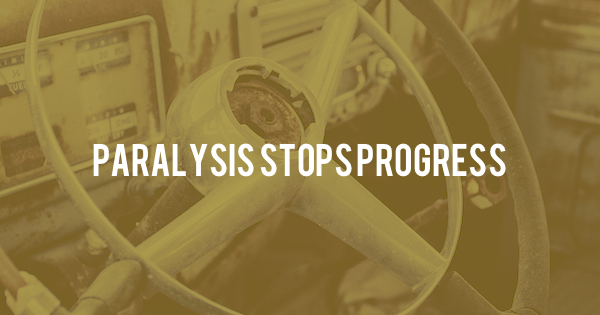I’m cleaning private households to support myself financially. It’s a repetitive, meditative and fun task which allows me to think while giving people a hand in their homes.
Today it struck me: You (me included) don’t move forward in your project, relation or business because you don’t know how. It’s valid for physical work (e.g. cleaning) and cognitively demanding tasks like writing.
When I start writing a client’s text „from the hips“ (without a plan, pre-defined order or structure) I’m usually wasting time. I like to tell myself that eventually, it will turn out into a good text. It won’t and never did. It’s rubbish.
How I write texts and clean homes
Instead, when I set an order of doing things and a rough structure for the content, I work more intentionally. A writing process for a client text could look like that:
- Create 3 blank text documents: one document for the briefing, one for research results, one for the draft
- Read and understand the client’s briefing — and ask questions so it’s clear what kind of text the client wants and which outcome he/she desires
- Turn briefing requirements into todo list items — one item per line
- Start the research
- Write headlines (sub-headlines) for each todo list item — they will become the text’s structure
- Write the introduction paragraph(s)
- Write the draft by finding 1-x paragraphs per headline (sub-headline)
- Fact research is still going on because of double-checking or verifying details but the gros of information is done
- Write the fine version
- Write the final version (including conclusion)
- Review, re-read and edit the final version
- Publish.
Similarly, here’s an example for the process of cleaning houses:
- Generally clean top to bottom (ceiling, walls, furniture, then floor) and dry-cleaning (dust and non-sticky dirt) before wet-cleaning (sticky, fatty and rusty dirt) — ideally use two separate cloths for dry and wet cleaning, but one is fine
- Start with the bathroom: a red cloth for toilet, a yellow cloth for the rest of the bathroom, a sponge for intense rubbing off dirt
- Continue with kitchen: a green cloth (one for both dry and wet cleaning, or two if available)
- Hallway, living room, working room, bedroom: a blue cloth (one for both dry and wet cleaning, or two if available)
- Clean one room at a time (top to bottom) or clean the ceilings of all rooms, then all the walls, then all the furniture, then all the floors
- Quickly review your work
- Optional: If client is present, hand over the result to the client
The greatest feeling: You enable or are enabled
You have a system set up, a process, a step-by-step plan which enables and activates you. You know how to act because you know where you’re planning to go. That’s how your cog wheels (motoric and mental) know how to run.
Having no plan, not any kind of plan, is the number 1 reason you don’t execute. Instead, you get paralyzed, procrastinate and delay.
The takeaway from today: If you’re not impulse-driven or directed by your guts, if you feel depleted by the vast options that today’s world is offering, then you need a plan: 3 steps, 5 steps or 10,000. If you have a plan you can plan your action, and act. If you don’t, you don’t. Write down the steps, schedule them and execute.
_
This was episode 53 of the #weekdaykickoff 🌊 Every weekday (Mon-Fri). Also find me on Anchor so we can talk — literally talk from person to person!
Also published on Medium.
